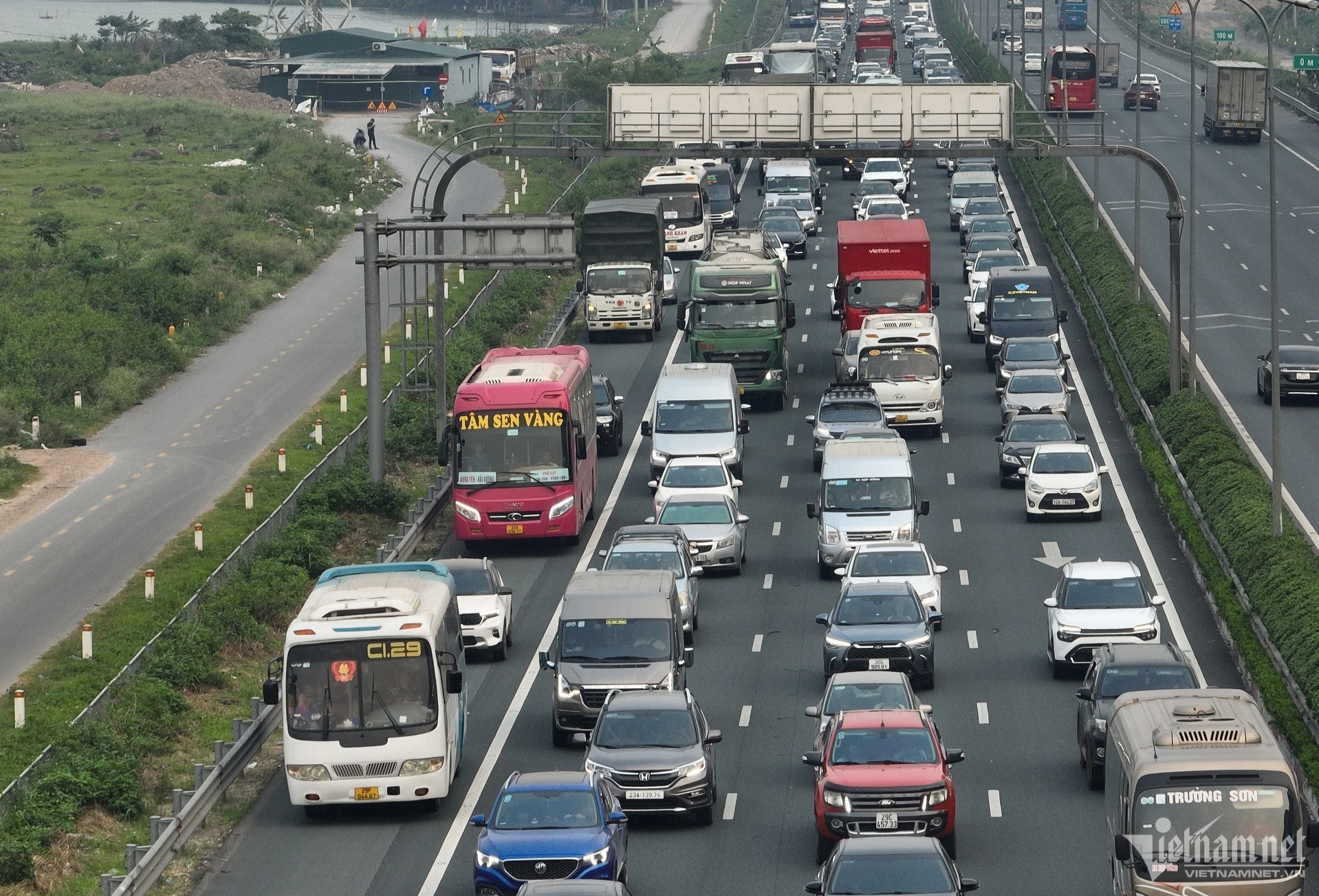
Le Van Dung from Phu Ly City in Ha Nam expressed concern about Hanoi and HCM City’s planned strict emission controls starting in 2026.
The draft national technical standards for vehicle emissions require cars to meet Levels 1-5 (equivalent to Euro 1-5). From January 1, 2026, cars made from 2017-2021 nationwide must meet Level 3, while Hanoi and HCM City require Level 4 from January 1, 2027. Cars produced from 2022 onward must meet at least Level 4 from 2026, and those registered in Hanoi and HCM City must reach Level 5 by 2027.
Under the draft roadmap for applying national technical regulations on automobile emissions in circulation in Vietnam, automobiles will have to meet emission standards Levels 1-5 (equivalent to Euro 1 to Euro 5).
Specifically, vehicles manufactured in 2017-2021 nationwide will apply level 3 from January 1, 2026. Hanoi and HCM City will apply level 4 from January 1, 2027.
Cars produced from 2022 onward must meet at least Level 4 from January 1, 2026, while those registered in Hanoi and HCM City must reach Level 5 by 2027.
Dung, who owns a car he bought in 2017, said the car is running well. Under the roadmap, the cars with Ha Nam license plates will be subject to emission level 3. However, if he travels often to Hanoi, the car may have to meet level 4, a level that his car has difficulty achieving.
He worries his car may be barred from Hanoi’s inner city. “For rural residents, an old car is a significant asset, and replacing it is a financial burden. Emission rules need a reasonable timeline and flexible measures like time-based or area-specific access, or support for vehicle upgrades,” Dung said.
“I go to Hanoi every week to visit my children and grandchildren or to get medical treatment. If my car does not meet the standards and is banned from entering the inner city, it will be really inconvenient,” Dung said.
He believes that for people in provinces, old cars are still a big asset and buying a new car is a financial burden. Emission regulations need to have a more reasonable roadmap and more flexible solutions, such as allowing these cars to circulate in certain hours or areas, or giving financial support to help vehicle owners upgrade their vehicles.
Dung is not alone. Many people have shown their worry about the application of new emission regulations, which poses a big challenge for them, especially mid-income owners.
Lack of clear enforcement scheme
Phung Dang Hieu from the Institute of Marine and Island Environmental Sciences noted that the draft doesn’t mention how control of vehicles from other localities entering Hanoi and HCM City would be implemented.
“If we restrict substandard vehicles from entering the inner city, who will control them? Is there an identification mechanism? It is unclear what emission levels the vehicles on the road have. Without identification, it will be difficult to implement the new emission rules and will cause confusion for authorities,” Hieu said.
He also noted that even within Hanoi’s inner city, there are large differences in population density and pollution levels. For example, areas like Ba Vi and Soc Son, which have clean air, do not need to apply high emission standards like the inner city.
Thus, it is necessary to clarify what a low-emission zone means. Without a specific legal basis, the punishment of substandard vehicles will lack basis. Regulations need to be realistic, avoiding generalization of all areas.
"Any legal document, if it wants to be put into practice, needs to be designed in a feasible direction, fully assessing the impact on life, economy and society, avoiding difficulties for people in the implementation process," Hieu said.
Emission labels, local low-emission zones
Le Hoai Nam, Deputy Director of the Environment Agency (Ministry of Agriculture and Environment), said the compilation team has recorded all feedback from the public, experts and relevant agencies. The draft is still in the process of compilation and adjustment.
According to Nam, the drafting committee agrees with the proposal to add a vehicle identification tool to facilitate inspection forces.
"We will study the use of labeling according to emission levels or adding emission level information to vehicle inspection stamps. This method has been used by many countries, and it is both transparent and effective in monitoring," Nam said.
Vu Diep